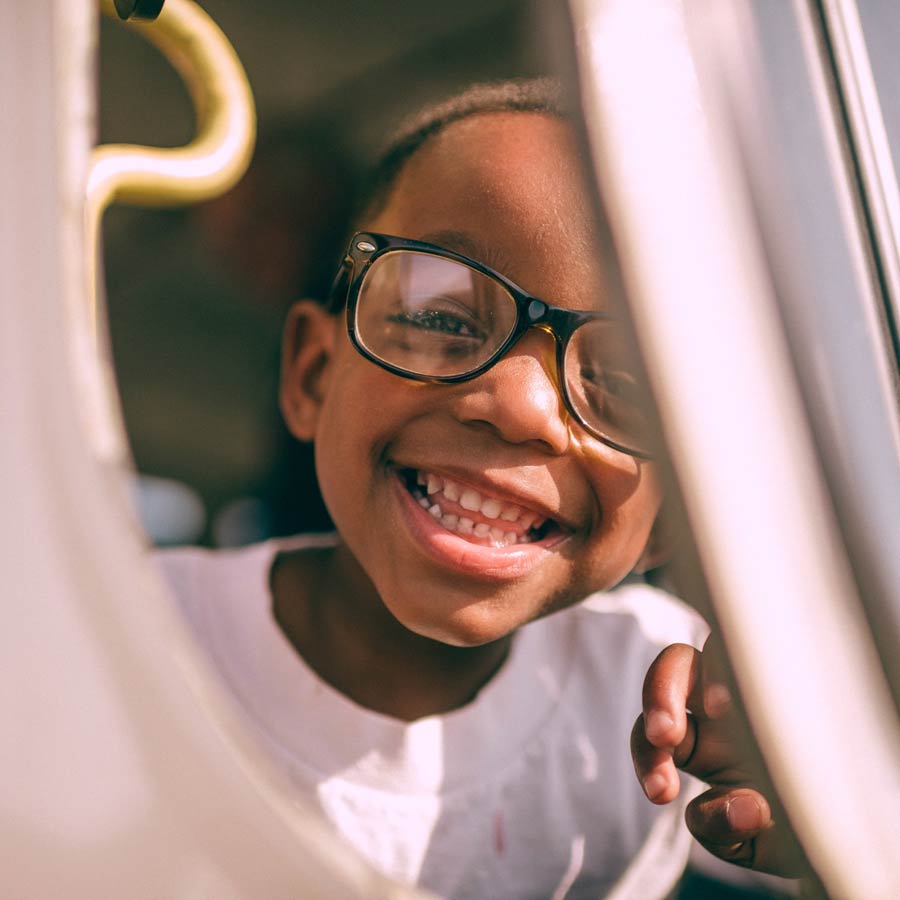Pediatric Eye Exam

When should children have their first eye exam?
Children should have their first comprehensive eye exam at six months, then again at three years old and before they enter kindergarten.
Once a child is in school, he or she should have an eye exam at least once every two years if no vision correction is needed. If a child has been prescribed eyeglasses or contact lenses, then they should be examined on an annual basis or as recommended by the optometrist.
The eye exam methods our optometrists use depend on the age of the child, but in all cases, the eye exam for a child will include learning about their history, testing their vision, determining whether eyeglasses are needed, testing the alignment of their eyes, conducting an eye health evaluation, and if needed, prescribing eyeglasses.
Why are children’s eye exams beneficial?
It’s important for children to have their eyes examined to ensure they are healthy and that they don’t have any vision problems which may interfere with their performance in school. Eye exams for children also assess whether they have the necessary visual skills which are essential for learning:
- Excellent vision for near, up close work and for distance.
- Comfortable and correct “eye teaming”, which means the eyes work well together and can focus on the same place in space.
- Excellent ability to switch the focus from an object up close to an object in the distance.
- Accurate eye movement skills, such as the ability to read a line of text.
Vision Screening Vs. Comprehensive Eye Exams for Children
A vision screening provided by a school or pediatrician is not the same as a comprehensive eye exam. Vision screenings do not diagnose eye or vision problems. They are designed to assess whether a child needs further testing.
Some common vision problems in children include:
- Myopia (also known as “nearsighted”, which means they can see objects well up close, but have problems seeing objects in the distance, like a blackboard).
- Hyperopia (also known as “farsighted”, which means they can see objects well in the distance, such as a blackboard, but have problems seeing objects up close).
- Astigmatism (a vision condition which causes fuzzy, blurry vision),
- Amblyopia (also known as “lazy eye”) is best treated while the child is still young, and their visual system is in development.
- Strabismus (otherwise known as “crossed eyes or misalignment of the eyes”).
- Focusing problems, poor depth perception, and color blindness.
- Eye health problems.
- Convergence insufficiency (an inability to maintain eye alignment when looking at objects).
Warning Signs of Vision Problems in Kids
Children may not be able to tell you they have vision problems, so it’s important to be aware of the warning signs which may indicate they have vision problems. Some early indicators of vision problems in children include the following behaviors:
- Frequent rubbing or blinking of the eyes
- Short attention span or daydreaming
- Poor reading skills
- Avoiding up close work
- Frequent headaches
- Covering one eye
- Tilting the head when reading
- Squinting one or both eyes
- Placing head close to the book or the desk when reading or writing
- Poor eye-hand coordination
Pediatric Eye Exams in Watertown, MA
Are you ready to schedule a pediatric eye exam with us at Greene & Greene Optometry? Contact us today to schedule your appointment.
